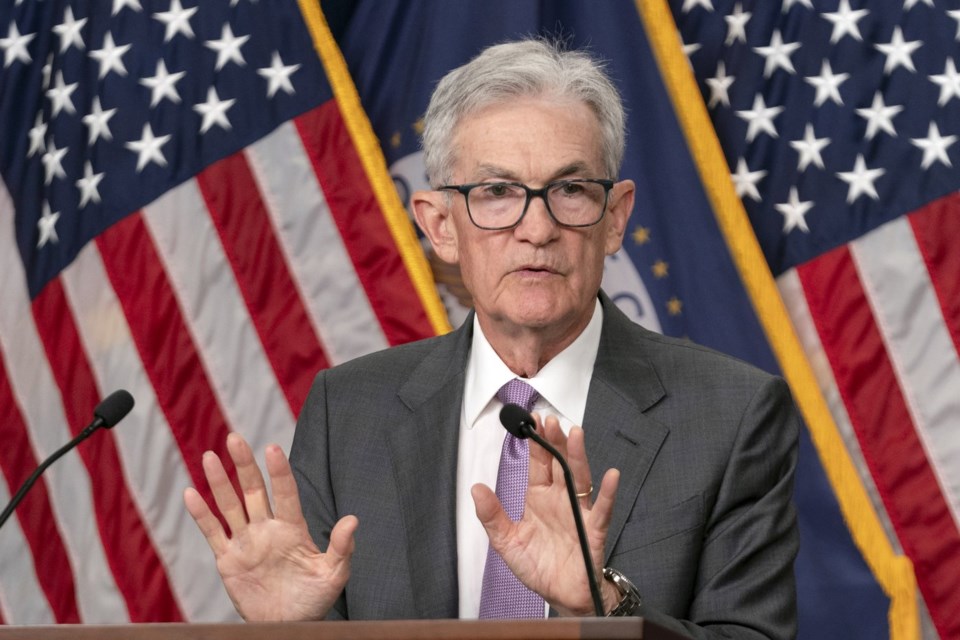WASHINGTON (AP) — Most Federal Reserve officials agreed last month that they would likely cut their benchmark interest rate at their next meeting in September as long as inflation continued to cool.
The of the Fed’s July 30-31 meeting, released Wednesday, said the “vast majority" of policymakers “observed that, if the data continued to come in about as expected, it would likely be appropriate to ease policy at the next meeting.”
In July, the policymakers kept their benchmark rate at 5.3%, a near-quarter-century high, where it's stood for more than a year.
Wall Street traders had already considered it a certainty that the Fed will announce its first interest rate cut in four years when it meets in mid-September, according to . A lower Fed benchmark rate would lead eventually to lower rates for auto loans, mortgages and other forms of consumer borrowing and could also boost stock prices.
The minutes of the Fed’s meetings sometimes reveal key details behind the policymakers’ thinking, especially about how their views on interest rates might be evolving. Further guidance on the Fed’s next steps is expected when Friday morning at the annual symposium of central bankers in Jackson Hole, Wyoming.
A rate cut in September, coming less than two months before the presidential election, could bring some unwelcome political heat on the Fed, which seeks to avoid becoming entangled in election-year politics. Former President Donald Trump has argued that the Fed shouldn’t cut rates so close to an election. But Powell has repeatedly underscored that the central bank would make its rate decisions based purely on economic data, without regard to the political calendar.
Several Democratic senators, led by Elizabeth Warren of Massachusetts, had urged Powell to cut rates at the Fed's July meeting and have argued that delaying a cut when it's warranted by the inflation data would itself be a political act.
Inflation, according to the Fed’s preferred measure, has tumbled from a peak of 7.1% in 2022 to just 2.5% now. In recent interviews with The Associated Press, Fed officials noted that as inflation slows, inflation-adjusted interest rates — which businesses closely track — rise. That trend supports a rate cut in the near term, according to both Raphael , president of the Fed's Atlanta branch and Austan , president of the Chicago branch.
“We might need to shift our policy stance sooner than I would have thought before," Bostic said.
Most analysts think Powell will signal in his speech Friday that the Fed has become confident that inflation is headed back to its 2% target and might even give some hint about how many rate cuts could happen this year. When he held a news conference after last month’s Fed meeting, Powell had suggested that a broad range of policy moves were possible, from “zero cuts to several cuts,” by year’s end.
Two days after the Fed met late last month, the government released a that showed that hiring was far weaker than expected and that the unemployment rate rose for a fourth straight month, to a still-low 4.3%. The sluggish hiring data triggered a sharp two-day , with traders suddenly fearing that a recession might be nearing.
But last week, the government reported that sales at retail stores and restaurants in July, evidence that consumers were still willing to spend and help power the economy. And a separate report showed that the number of people seeking unemployment benefits — a proxy for layoffs — during the previous week, a sign that most businesses are still holding on to their workers.
Christopher Rugaber, The Associated Press




